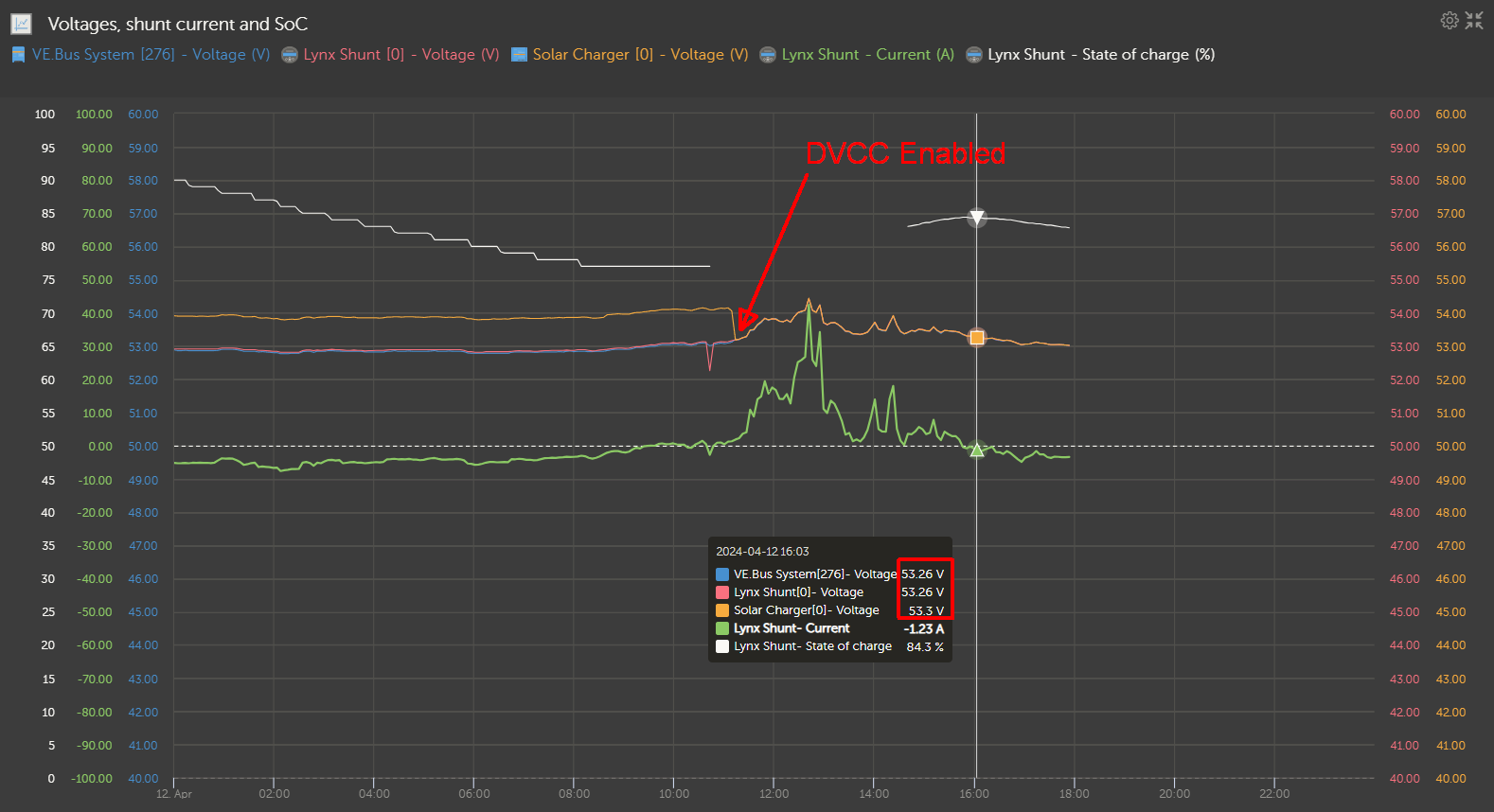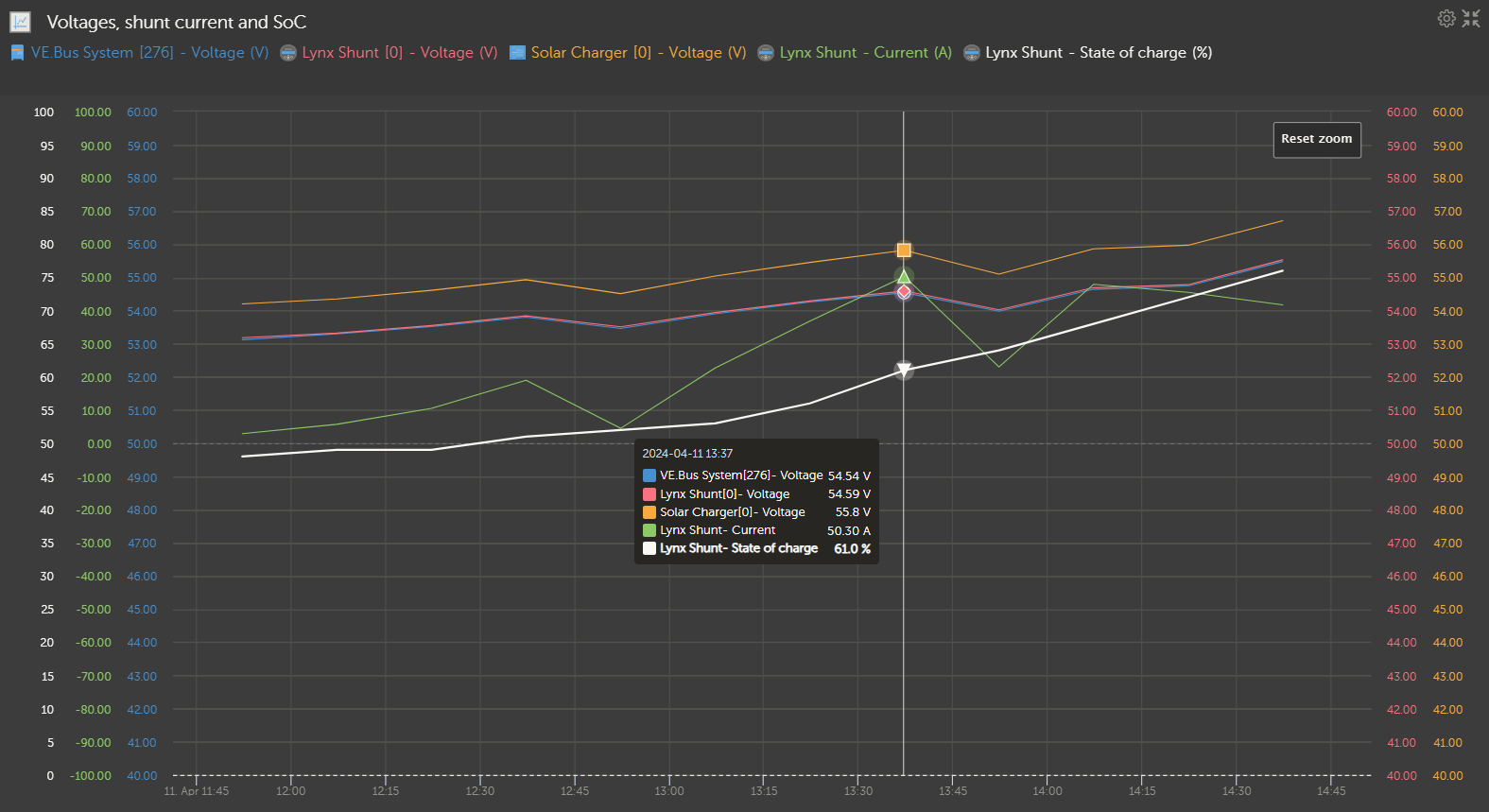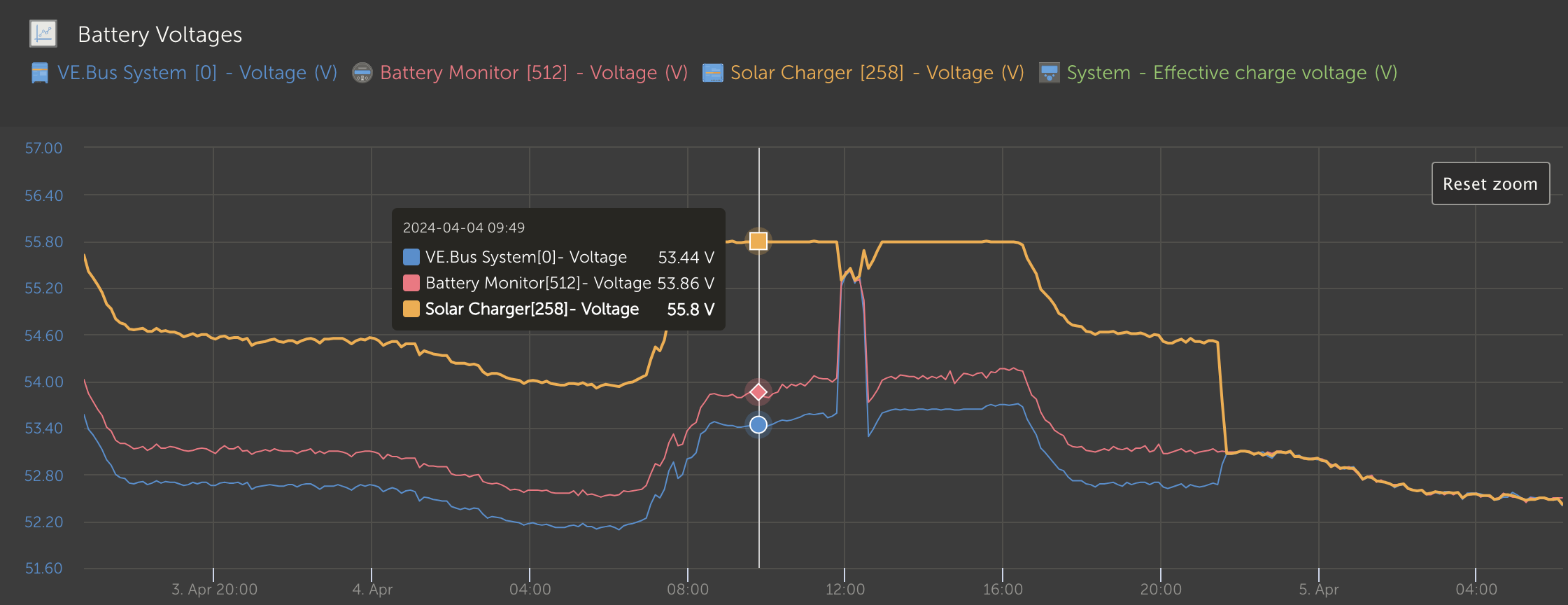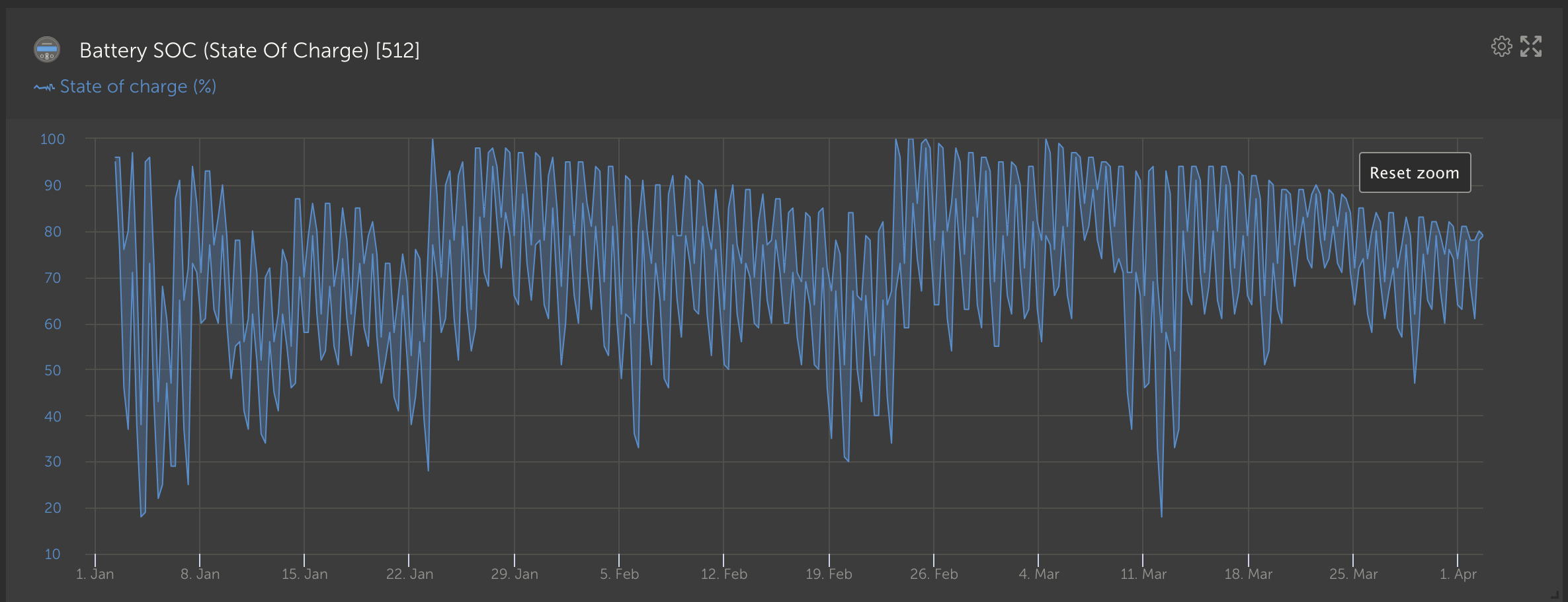This is the third one I've encountered. This is a 250/85 VE.Can model.
MPPT clearly reading a full 1V higher than the shunt and inverter:

This is 2am with the charger idle, so current is not influencing it. This clearly does not meet the 1% allowance in the RMA troubleshooting doc.




